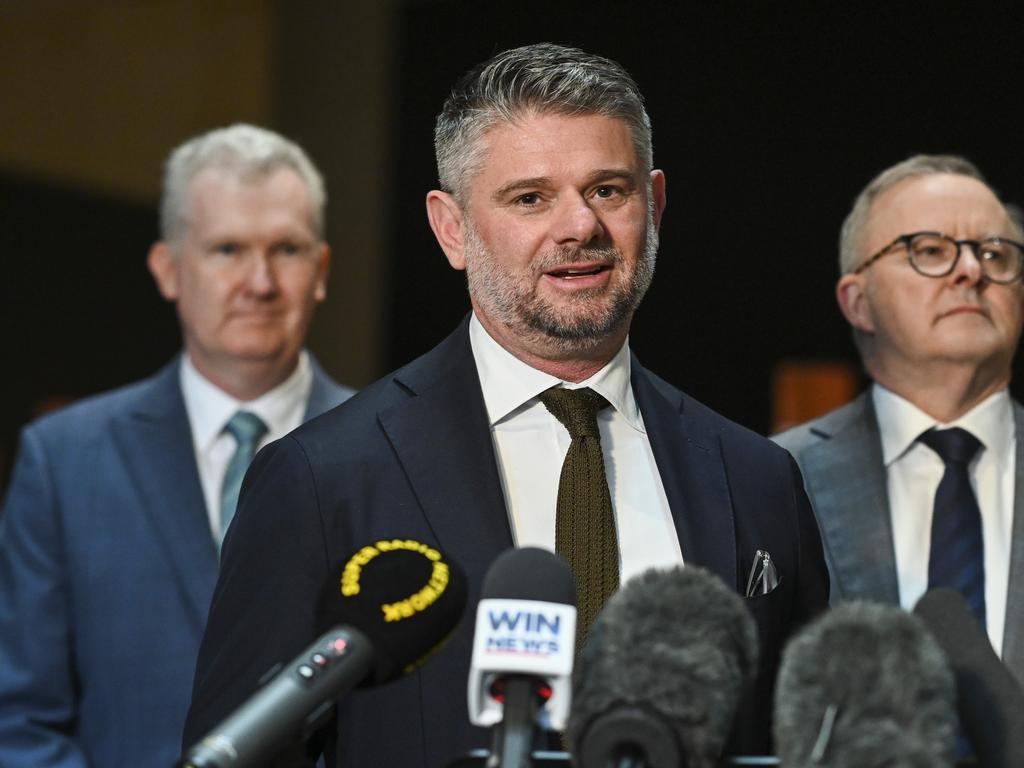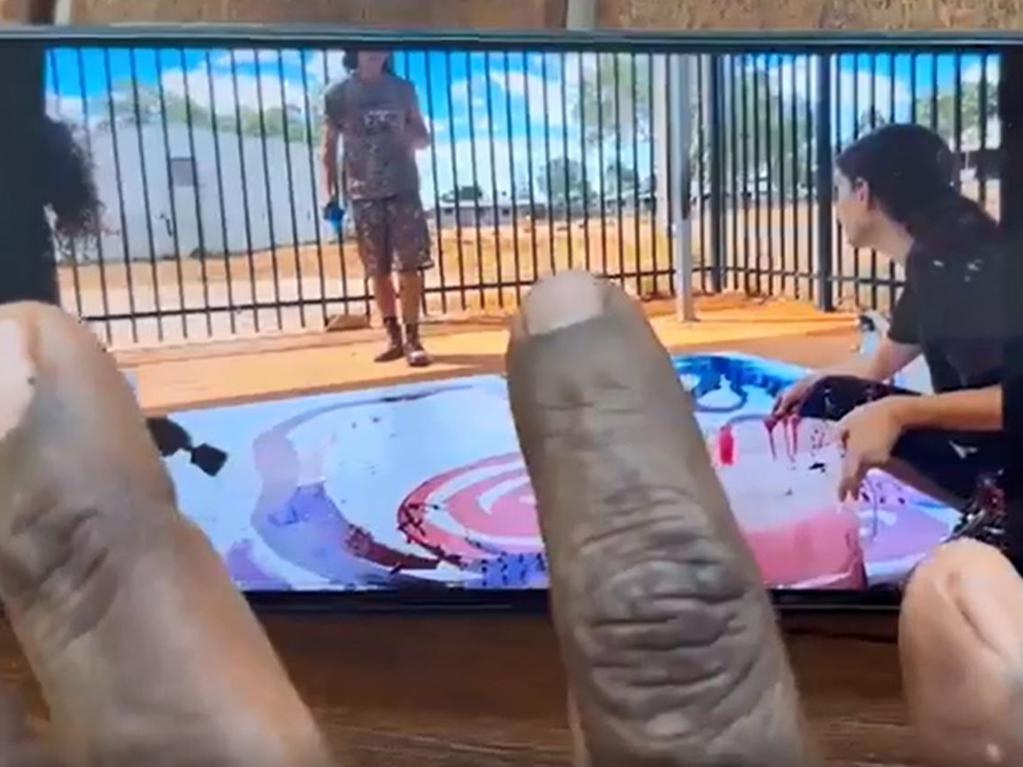National art institutions in crisis: the National Gallery of Australia is just the tip of the iceberg
Galleries are largely staffed by a sub-intellectual class, who know little about art and are visibly more concerned with ideological self-positioning. We should not be content to leave our organs of collective memory to them.

The topic of government funding for arts, culture and education is a perennial one, but a couple of specific and urgent questions came up at the end of last year. One of these was the possibility that inadequate funding of the National Library in Canberra could lead to the closure of its popular and important Trove program, which allows online searching of a vast collection of digitalised books and periodicals. Separately, there were concerns about the funding required to maintain the National Archives.
The National Gallery of Australia, meanwhile, revealed that it might be forced to close for several days a week, lay off staff or start charging admission unless it was given additional funding. In the past few weeks there have been reports of water leaks and other defects in the building itself. It was unfortunate that the Gallery is also spending at least $14m on a single and questionable commission for its sculpture garden – funds which could have been better employed developing its core collections. In today’s art market $14m can either buy you a lot if you are discerning or almost nothing if you are not.
The NGA has now been hit by another scandal, with this paper’s revelations about the alleged involvement of white assistants in painting works signed by Aboriginal artists from the APY Lands. The general manager of the APYACC and its board have strenuously denied the allegations. The Gallery’s principal winter exhibition, meant to open in June, is drawn entirely from this source. The Gallery has announced an independent enquiry into the authenticity of these works, but it is hard to see how it will get the clearance it is seeking.
The federal government has at last announced much-needed emergency grants to avert disaster, but this does nothing to solve longer-term problems that arise from inadequate funding, institutional mismanagement, or frequently some combination of the two. Thus the enforcement of so-called “efficiency dividends” seems like a perverse approach to funding, and yet it has not prevented the proliferation of bureaucracy and what the anthropologist David Graeber has called “bullshit jobs”, too often at the cost of curatorial positions and expertise.
These meaningless positions, concerned with “engagement” or “corporate development” and so on – which should be the director’s job – are also a response to government’s ill-conceived priorities (“key performance indicators”). The emphasis on visitor numbers in galleries, for example, can lead to populist programming and gimmicks to attract crowds at any cost. In all of this we seem to have drifted a long way from the original purpose of galleries and museums in particular.
All great civilisations have supported the arts in various ways. Classical Athens, notably, not only spent a vast amount of money on the architecture and sculpture of the Acropolis and other public buildings, but funded the theatre festival of Dionysus and even subsidised the poorer citizens to attend the performances; theatre was considered as education as well as entertainment.
Early modern Europe inherited from Antiquity the assumption that support for art and culture in all its forms was the duty and thus the sign of a great monarch. From the Medici in Florence to the Popes and later Louis XIV, generous support for arts and letters was a princely virtue, and the flourishing of the arts was considered evidence of a successful reign. Over time this increasingly included collecting and preserving the culture of the past as well, and making galleries and museums available first to scholars and connoisseurs and then to a broader public.

The value of supporting art and culture should be no more controversial than that of supporting education; they are all part of the formation of sophisticated and enlightened minds and thus, in the broadest sense, good citizens. And the need for funding is also clear: very little highly ambitious art has ever been able to make enough money to pay for itself. If you want commercially viable culture, you’ll be left with pop music and television. At the same time, it is as important to support artists and humanities scholars as chemists or engineers if we are to foster an intelligentsia capable of informing a nation’s political and cultural and economic life.
But returning more particularly to museums and galleries, it seems that we have rather lost sight of the purpose of these institutions. Too often they behave as though their mission was to provide a form of entertainment, which explains the populist bias towards fashion and design as well as the desperate chasing of trends in contemporary art. At the same time, they seem driven to impose their social ideologies on exhibitions, on programming and perhaps most of all on the permanent collections and displays. But neither populist pandering nor ideological indoctrination is the true mission of public museums and art galleries.
Their primary duty, as places of communal memory and reflection, is to collect, conserve, research and exhibit works of art, cultural documents, and historical or natural artefacts. Exhibitions should be engaging, well-designed and appealing, but they should not be populist; and they should be open to new readings and alternative perspectives, but they should offer these as possibilities rather than attempting to impose them as dogma.
Where does contemporary art fit into this mission? There is a place for it, but it can never be at the centre of the life of a public art gallery because it is too subject to fashion, institutional promotion and commercial manipulation. Anyone who cares to reflect on the successive waves of fashion in the arts over the past 50 years will be reminded of how much wreckage has been left behind and how few figures are still standing.

One of the anomalies of the Sydney art world is that the AGNSW insists on chasing contemporary art, even though they are not very good at it, and though it is clearly to the detriment of the collections which should be the priority. Contemporary art should be the business of the Museum of Contemporary Art, which does it much better. The Art Gallery should not be exhibiting contemporary artists until they reach the mid-career survey point.
The priority for state art galleries should be the development of their core collections, which in most cases will include Australian art, Indigenous art, European art before 1800, European and American art since 1800, Asian art (ideally with sub-collections for Islamic art, Indian, East Asian, etc.), as well as drawings, prints and photography. Some institutions also hold collections of antiquities and archaeological material from various parts of the world.
This is a wide range of fields, and all institutions should constantly be seeking to extend their collections and fill gaps in the story they can tell. And as I have suggested before, every large gallery should aim to present at least one exhibition a year drawn from its main collecting areas, perhaps centring on new acquisitions, and supplemented by loans from other galleries or private collectors.
This is the sort of thing that our bigger galleries did more or less effectively in earlier years, but the Covid period has interrupted this rhythm and exhibition programming has not yet recovered. Meanwhile, funding seems to have been largely diverted from building the collections to sensational big-ticket contemporary purchases.
The gaggle of dubious commissions for the AGNSW extension is the most recent example, but the National Gallery commission mentioned has egregiously squandered a vast amount of money that could have made an enormous difference across all its departments.
I already mentioned the way that curatorial expertise has been sacrificed for bullshit jobs, and this goes all the way to the top, and helps explain the weakness of our public gallery directors. Most of these people know little about art and are visibly more concerned with politics, fashion, money and ideological self-positioning than with the serious cultural role that they should be playing.

What kind of people should be running our galleries? If we are looking for a benchmark of excellence, it would be the late Andrew Sayers (1957-2015), whose last role was as the director of the National Museum of Australia. Sayers was an exceptionally intelligent and thoughtful man who was already brilliant as an art history student at Sydney University.
After graduation, he worked at the Newcastle Regional Gallery, then at the National Gallery as curator of Australian works on paper and later assistant director of collections. He built the drawing collection, and published several books, including Drawing in Australia (Oxford University Press, 1989) and Australian Art in the Oxford History of Art series (2001). He was founding director of the National Portrait Gallery and oversaw the construction of its new home in Canberra. And finally he took over the National Museum, although he really should have been made director of the National Gallery.
None of the current directors of our big galleries has achieved anything like this. With a few exceptions, they are mostly career administrators whose contributions to scholarship, connoisseurship and critical reflection are thin on the ground. And the most pernicious effect of this seems to have been a discouragement of scholarship within the institutions. James Mollison, the founding director of the NGA, was no scholar, but he was a connoisseur and intelligent enough – as he once told me – to surround himself with people who knew a great deal more than he did about every specialist collecting area.
As a result, when Sayers was at the NGA, so were other substantial people; today the curatorial staff there, as in Sydney and Melbourne, is considerably less impressive, and it shows in the quality of the permanent displays as well as the temporary exhibitions. The trouble is that our institutions have not been recruiting the best art historians; candidates with real expertise can be passed over, in today’s climate, in favour of so-called “diversity”. At the same time, the infatuation with contemporary art has meant that people with no knowledge of art history at all are being employed because of supposed “curatorial” or “critical” abilities. Being a good critic, however, requires an outside and independent perspective; any tertiary course purporting to teach “criticism” will really be about training the individual as an insider, aligned with institutional values.
And this is part of a broader problem. Public galleries and similar organisations are, as already mentioned and again with a few honourable exceptions, neither managed nor staffed by scholars or intellectuals. They are largely populated by a sub-intellectual class, which is to say people who are neither intelligent and bold enough to reason for themselves nor willing to take the risk of asking dangerous questions. Yet these individuals long to be “intellectual” – and perhaps above all long to be right – and are thus naturally drawn to ideology, which give you all the answers without having to ask any of the questions, and allow you to have ideas and opinions without having to endure the painful process of thinking. All you need to do is to stick with other like-minded people and share the approved watchwords.
The question, however, is whether we are content to leave our most important cultural institutions, our organs of collective memory as suggested above, to people like this. Reform will not be easy, because so many functionaries will cling to their positions until they retire, but it could start with conscious change at the level of boards and management. Otherwise, one may well ask why governments should be expected to increase funding for dysfunctional organisations.







